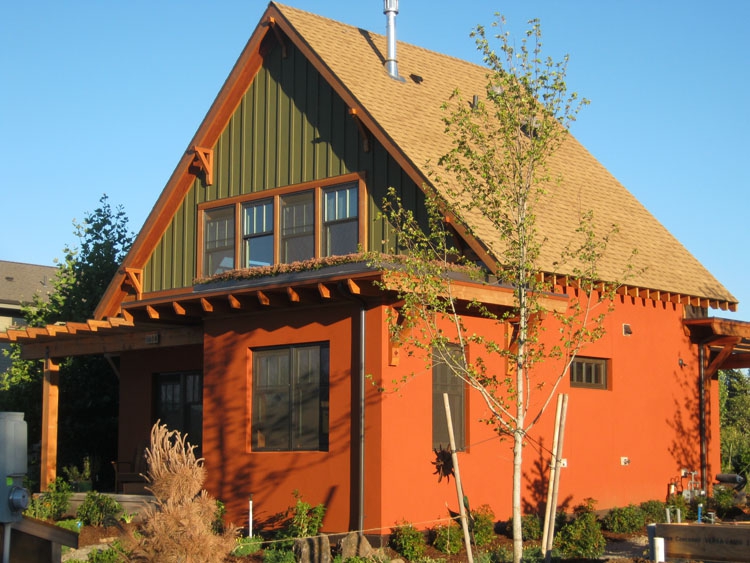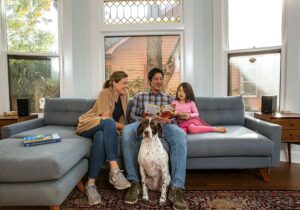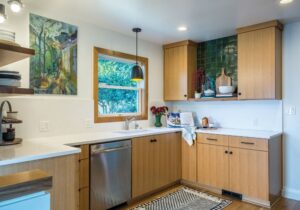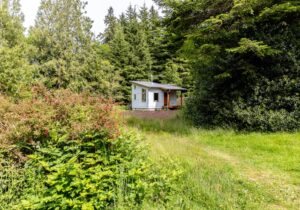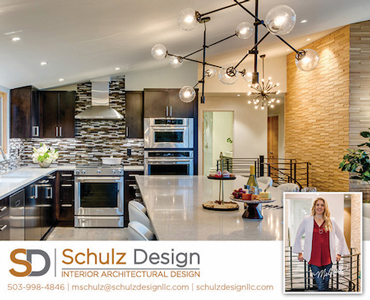When Florida residents Peter Belmont and Laurie Macdonald began planning for a second home in Hood River, they knew they wanted to incorporate green building materials as much as possible. “Both Laurie and myself have been involved in environmental issues and policymaking most of our lives,” says Belmont. He is a retired attorney, and Macdonald still works as a wildlife zoologist. “Trying to use more sustainable materials is important to us.”
Among Belmont’s requirements was building the house out of some kind of “eco-block.” With help from Tom Reid, owner of Green Home Design+Build in Hood River, the couple chose a product called Faswall as their primary building material.
Faswall is an insulated concrete form or ICF. Each two-foot by one-foot block resembles a giant cinderblock, down to the two large cores in the middle. However, these blocks weigh in at only 27 pounds due to their blend of concrete and wood.
Paul Wood with ShelterWorks Ltd., the Philomath company that manufactures Faswall, says one of the main reasons people choose Faswall is their superior thermal mass. The blocks absorb heat when the sun is out, then slowly give it off in the evening. That means indoor spaces stay comfortable no matter the weather, and homeowners can expect very low heating bills.
Since both concrete and wood are organic materials, they do not release toxic fumes. Faswall blocks are breathable, which means moisture does not build up in homes and cause mold and mildew to grow. This is a foundational step toward creating great indoor air quality, Wood says. “Although many conventional building products are low cost and quick to use, they have adhesives and other things that off-gas. You do pay a price for that in the long term.”
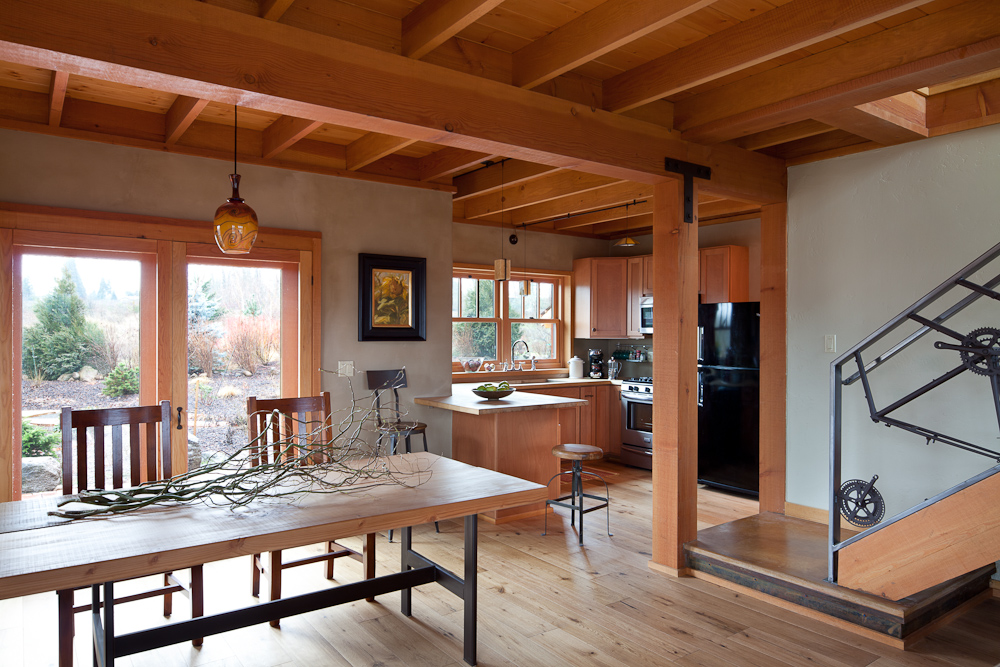
Faswall ups the eco-friendliness of their blocks by manufacturing them with 100 percent recycled wood. Co-owner Tom Van Denend sources it from a pallet recycler in nearby Albany. The blocks’ high wood content means they can be cut with normal saws. Wood notes that is one of many qualities that make them ideal for DIY home builders. The concrete means they resist pests and dry rot.
Some people believe building a green home is synonymous with sacrificing beauty and design. That definitely isn’t the case with Faswall. Homes built with the block can take any type of finish. Green Home Design+Build’s Reid says he steered Belmont and Macdonald toward it because they were interested in utilizing stucco inside and out. “Faswall block is really ready to stucco. You don’t have to prep the building first.”
Since the couple was planning to be in Hood River primarily in the summer, Reid knew the stucco would enhance Faswall’s ability to keep the house cool. “Stucco is a great thermal mass building product. It surrounds you,” he says.
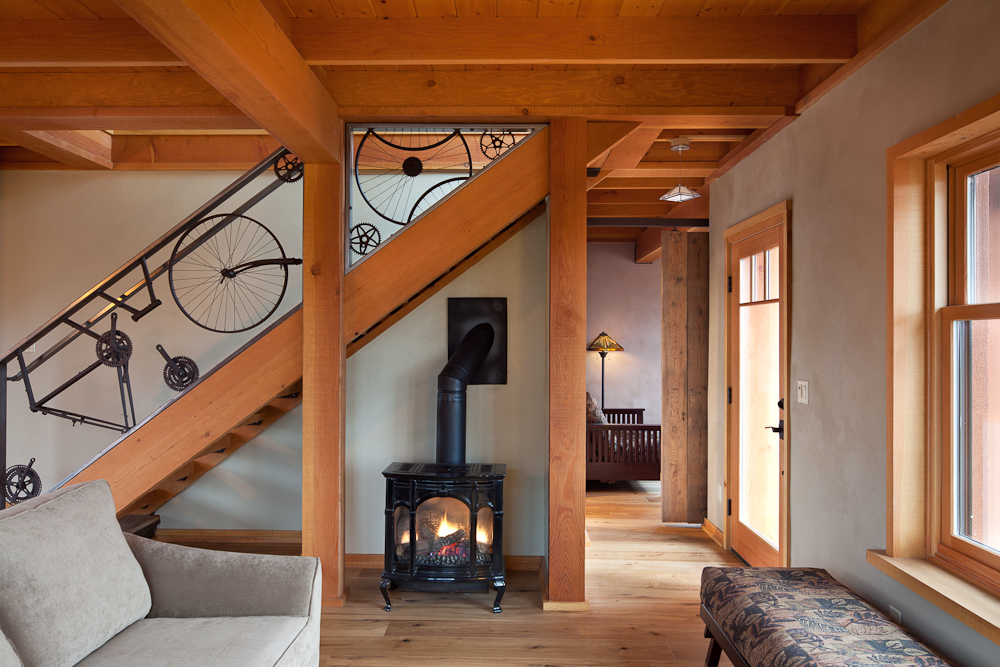
All that thermal mass is doing its job. Belmont and Macdonald installed solar panels next to their 1,300-square-foot bungalow, and most of the time they’re returning energy to the grid. The house is so energy-efficient it doesn’t require air conditioning. A small gas stove tucked under the staircase is the only heat source.
A green roof on the rear portion of the house is also doing its part to keep things cool in the summer. It’s planted with sedums, and “I’ve been surprised how many color changes the roof goes through,” Belmont says.
Inside the house, sage green walls complement golden, gleaming wood on nearly every surface. Green Home Design+Build used Douglas fir to craft a post and beam ceiling. A glass door and 3-over-1 double-glazed windows allow in plenty of sunlight. Butcher block counters in the kitchen reflect the glow of three pendant lights fitted with energy-efficient LED bulbs. A barn door on a black track separates the guest bedroom/den from the living area. Several mission-style furniture pieces sit atop wood floors.
Belmont is a bicycling enthusiast, and he asked Hood River metal artist MacRae Wylde to use one of his old bikes to craft a handrail for the staircase. Upstairs is a master suite with cork floors. The loft-style sleeping area is open to allow for maximum heat and air circulation.
With everything he loves inside the house, Belmont says his favorite feature may be outside. “Being from Florida, it’s pretty amazing that you can look out the windows and see mountains,” he says, gazing at a perfect view of Mt. Adams framed in his living room window.


